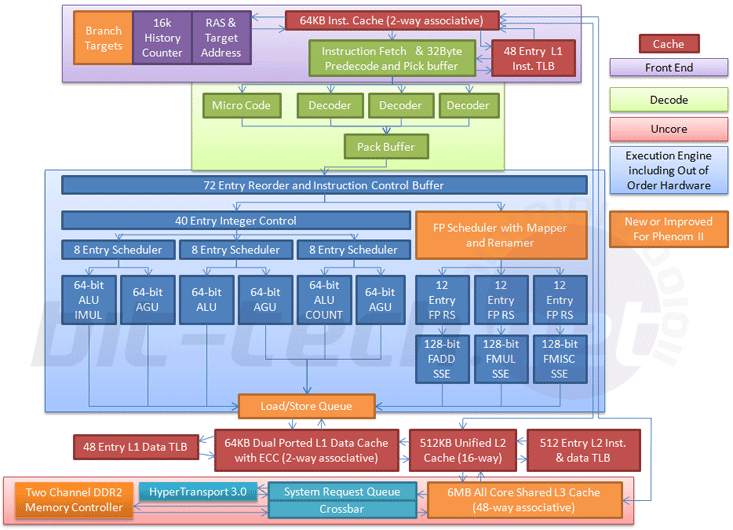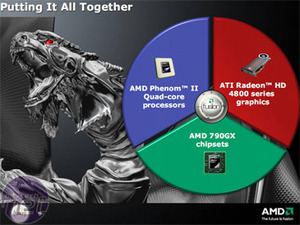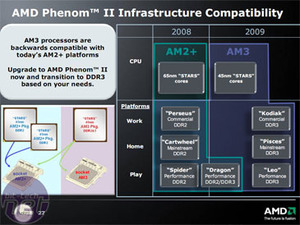
SSE4a
SSE4a instruction support is included - just like the 65nm Phenom - and includes one instruction (POPCNT) only found in Intel's SSE4.2 (Nehalem CPUs), as well as three other ones unique to AMD. However, it doesn't include support for video encoding motion estimation (Fast Block Difference and Horizontal Minimum Search), that greatly helped performance where supported: Divx 6.8 and TMPEG for example.AMD has already announced its aspirations for SSE5, due with the next generation of AMD architecture (2010/11) - this is likely to compete against Intel's future versions of SSE4.x and AVX instructions, in the same way 3DNow! did with MMX.
Other Enhancements
We are still in the process of finalising the details and reasons for the changes with AMD, but here's a list of the other architectural enhancements for Phenom II:- Path-based indirect branch prediction which is particularly important because branch prediction in the processor front end avoids wasted execution time by keeping track of the threads processed and giving a greater chance to correctly predict the data it might need from main memory. Improving this process always yields better performance because it's never 100 percent accurate.
- Larger load/store buffering / larger floating point buffering / reduced MAB (missed address buffer) lifetime. As yet, we've got no details of exactly how much larger these are, but the current execution engine load/store buffer is 12+32 entries and the floating point unit scheduler is 36-entry. Without the additional executing techniques like HyperThreading or a wider execution engine, we're not exactly sure why larger buffers benefit on their own yet though.
- Improved LOCK pipelining: LOCK is an instruction prefix which assigns the next instruction an exclusive use of a particular shared memory, and now when multiple LOCKS are in process simultaneously there is now an improved performance from Phenom II.
- Floating point register-to-register move instruction (FP MOV) has received improvements as well.
The Dragon Platform
The Dragon Platform is an update to the Spider platform - this includes the latest 4800-series graphics card, instead of the older 3000-series, an AMD 7-series chipset with AMD OverDrive support (the new SB750 with ACC is preferred here), and obviously tidying this off with a new Phenom II CPU. It's unsurprising as AMD is the only company with the complete fundamental package of CPU, graphics and chipset, and it's actively trying to get performance enthusiasts and gamers (one of the toughest markets) to buy into.Businesses wouldn't need to use high end graphics and Intel and Nvidia are predominant in HPC/Workstations with their Xeon and Quadro brands respectively, so enthusiast and power user is the only other segment that morphs all these together. Later this year AMD will expand its branding into more segments with the Kodiak, Pisces and Leo platforms arriving in the second half of 2009, for "work", "home" and "play" respectively.

MSI MPG Velox 100R Chassis Review
October 14 2021 | 15:04











Want to comment? Please log in.